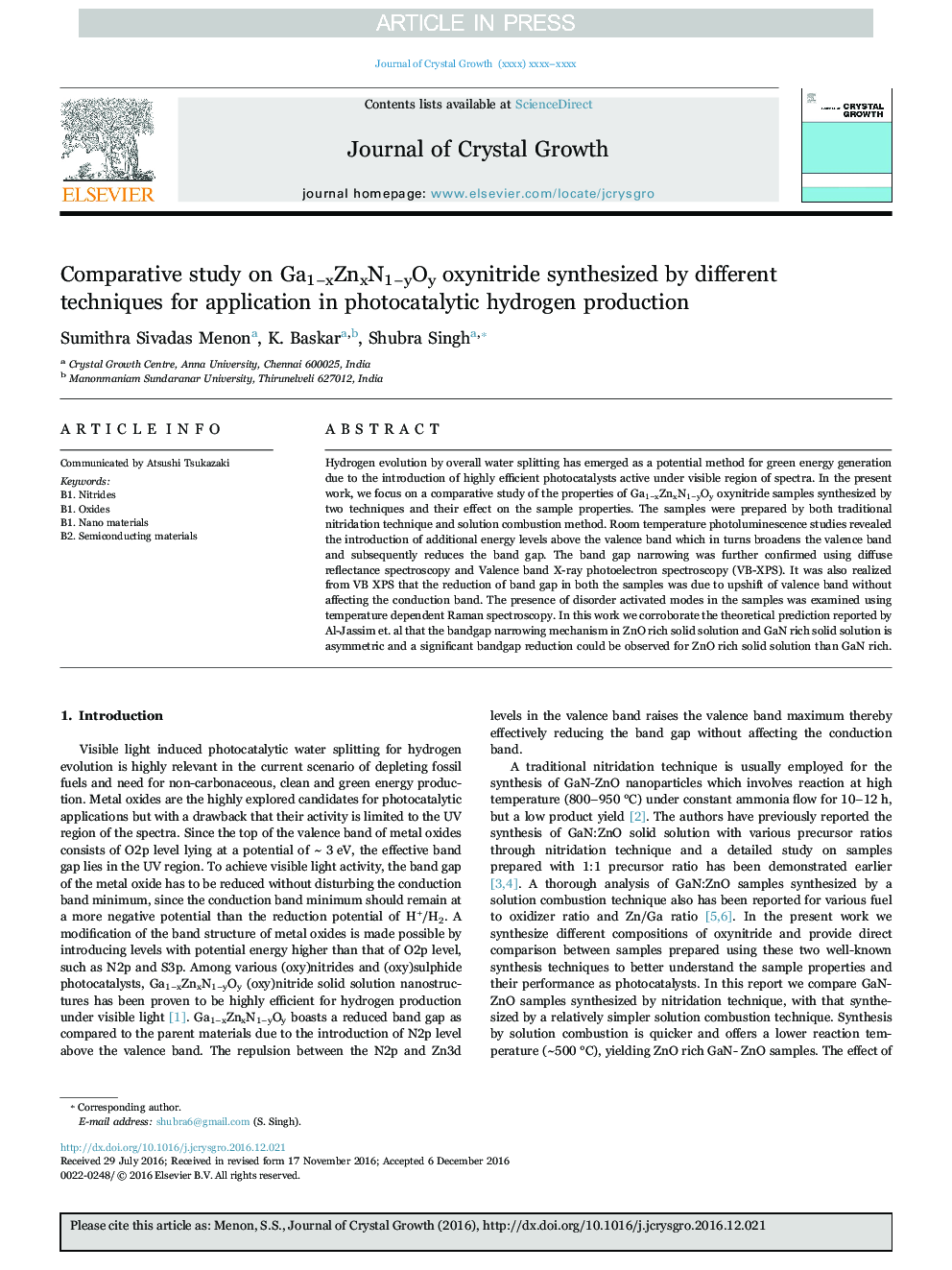| Article ID | Journal | Published Year | Pages | File Type |
|---|---|---|---|---|
| 5489550 | Journal of Crystal Growth | 2017 | 5 Pages |
Abstract
Hydrogen evolution by overall water splitting has emerged as a potential method for green energy generation due to the introduction of highly efficient photocatalysts active under visible region of spectra. In the present work, we focus on a comparative study of the properties of Ga1âxZnxN1âyOy oxynitride samples synthesized by two techniques and their effect on the sample properties. The samples were prepared by both traditional nitridation technique and solution combustion method. Room temperature photoluminescence studies revealed the introduction of additional energy levels above the valence band which in turns broadens the valence band and subsequently reduces the band gap. The band gap narrowing was further confirmed using diffuse reflectance spectroscopy and Valence band X-ray photoelectron spectroscopy (VB-XPS). It was also realized from VB XPS that the reduction of band gap in both the samples was due to upshift of valence band without affecting the conduction band. The presence of disorder activated modes in the samples was examined using temperature dependent Raman spectroscopy. In this work we corroborate the theoretical prediction reported by Al-Jassim et. al that the bandgap narrowing mechanism in ZnO rich solid solution and GaN rich solid solution is asymmetric and a significant bandgap reduction could be observed for ZnO rich solid solution than GaN rich.
Related Topics
Physical Sciences and Engineering
Physics and Astronomy
Condensed Matter Physics
Authors
Sumithra Sivadas Menon, K. Baskar, Shubra Singh,
